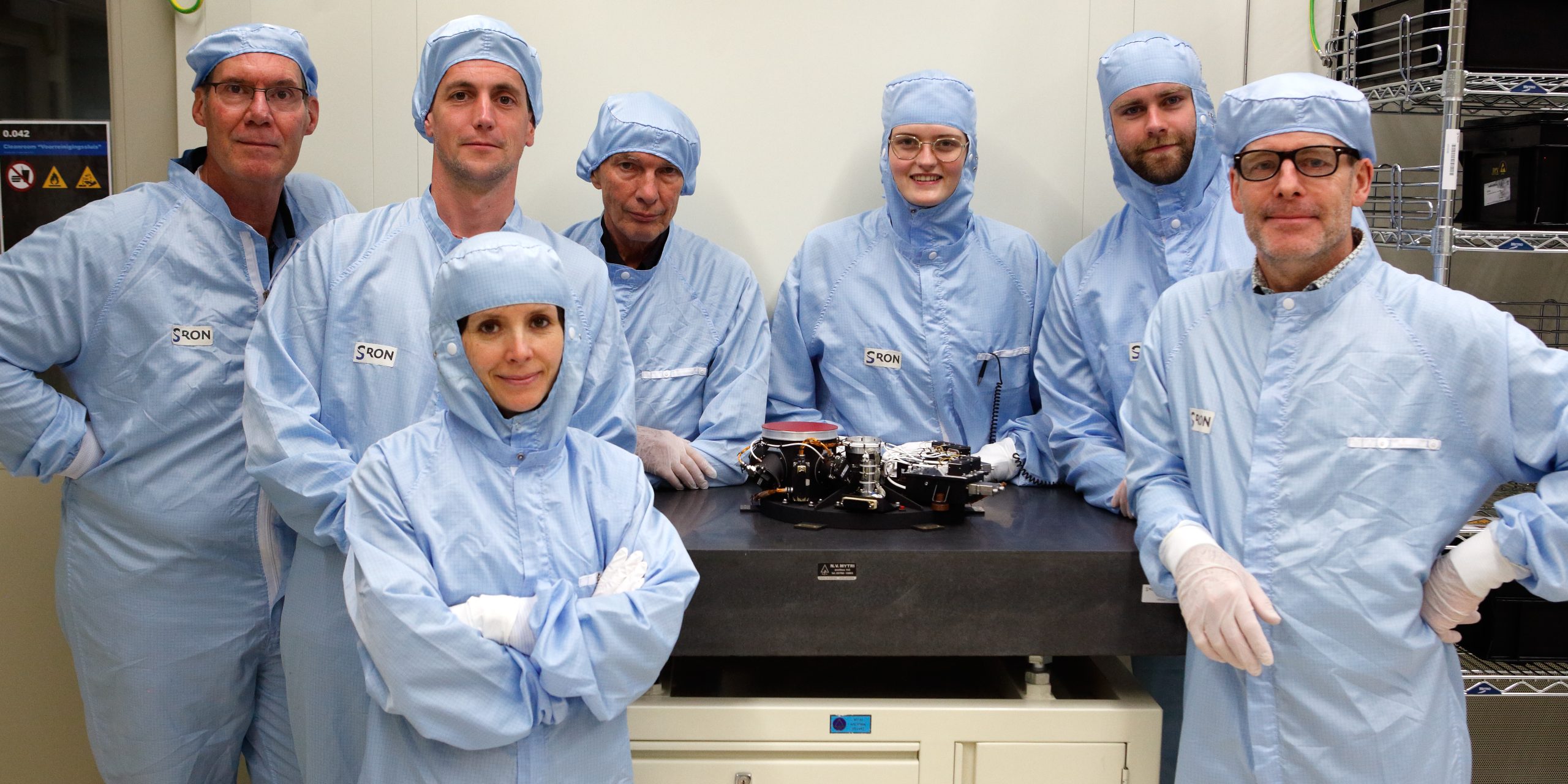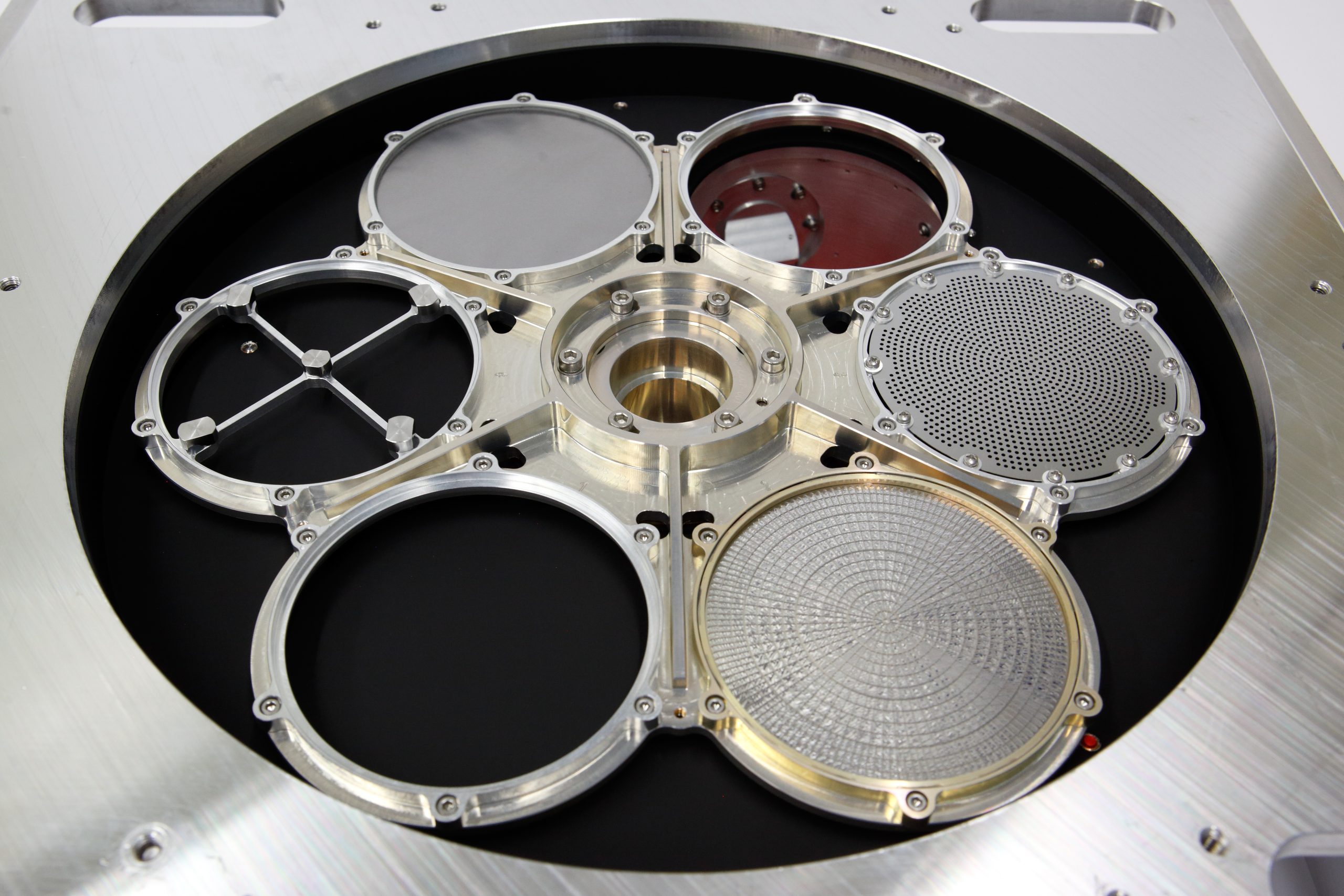


The X-ray Imaging and Spectroscopy Mission (XRISM) is a space telescope from the Japanese space agency JAXA. It was launched on September 7th 2023. XRISM replaces the Hitomi telescope which lost contact a few weeks after launch in 2016. The satellite will perform X-ray spectroscopic observations of the hot plasma in astrophysical sources, revealing its composition and evolution.
XRISM will be in operation for a minimum of 3 years using two instruments: the spectrometer Resolve and the CCD Detector Xtend. SRON builds the filter wheel including calibration sources for Resolve.
Science
XRISM will pick up Hitomi’s science mission where its predecessor left off. One of the main goals is to give astronomers insight into clusters of galaxies: How did they form? How do they evolve? What does their structure look like? The satellite will look at the plasma between galaxies in a cluster—the intergalactic cluster medium (ICM). The ICM composes the largest part of the non-dark matter in a cluster, outweighing stars which only contribute about 15% to the total baryonic mass.
During the merger of two clusters of galaxies, gravitational energy is released and converted into thermal energy, motion of the ICM and speeding up of relativistic particles. XRISM will study how this process works by measuring the velocity of turbulence in both relaxed and disturbed galaxies.
Besides the ICM, XRISM will observe a variety of phenomena, from powerful winds ejected by supermassive black holes to supernova ejecta. XRISM will reveal their composition and how they interact with the environment.
Technology
Resolve consists of a mirror assembly and a calorimeter and has a 5-7 eV energy resolution in the 0.3-12 keV bandpass with a field of view of about 3 arcminutes. It uses different filters to look at various wavelength or block out X-rays when a star or black hole gives off so much radiation that it blinds the detector. To change filters, a wheel containing all filters rotates until the right filter sits in front of the camera. SRON builds the filters and the filter wheel for Resolve, including calibration sources. The wheel harbors a molybdenum grey filter to reduce the overall observed brightness of a source and beryllium to filter out X-rays of unwanted energy. Finally a polyimide-aluminum filter serves to avoid ambient contamination. A radioactive 55Fe filter fills a spot on the filter wheel for calibration purposes. The 55Fe spectrum is well known and it will be used to gauge the spectrum of astrophysical sources. The calibration system also contains modulated X-ray sources (MXS) to calibrate the energy scale of Resolve. The Dutch company Photonis delivered these MXS-units to SRON, where they were assembled and tested.


